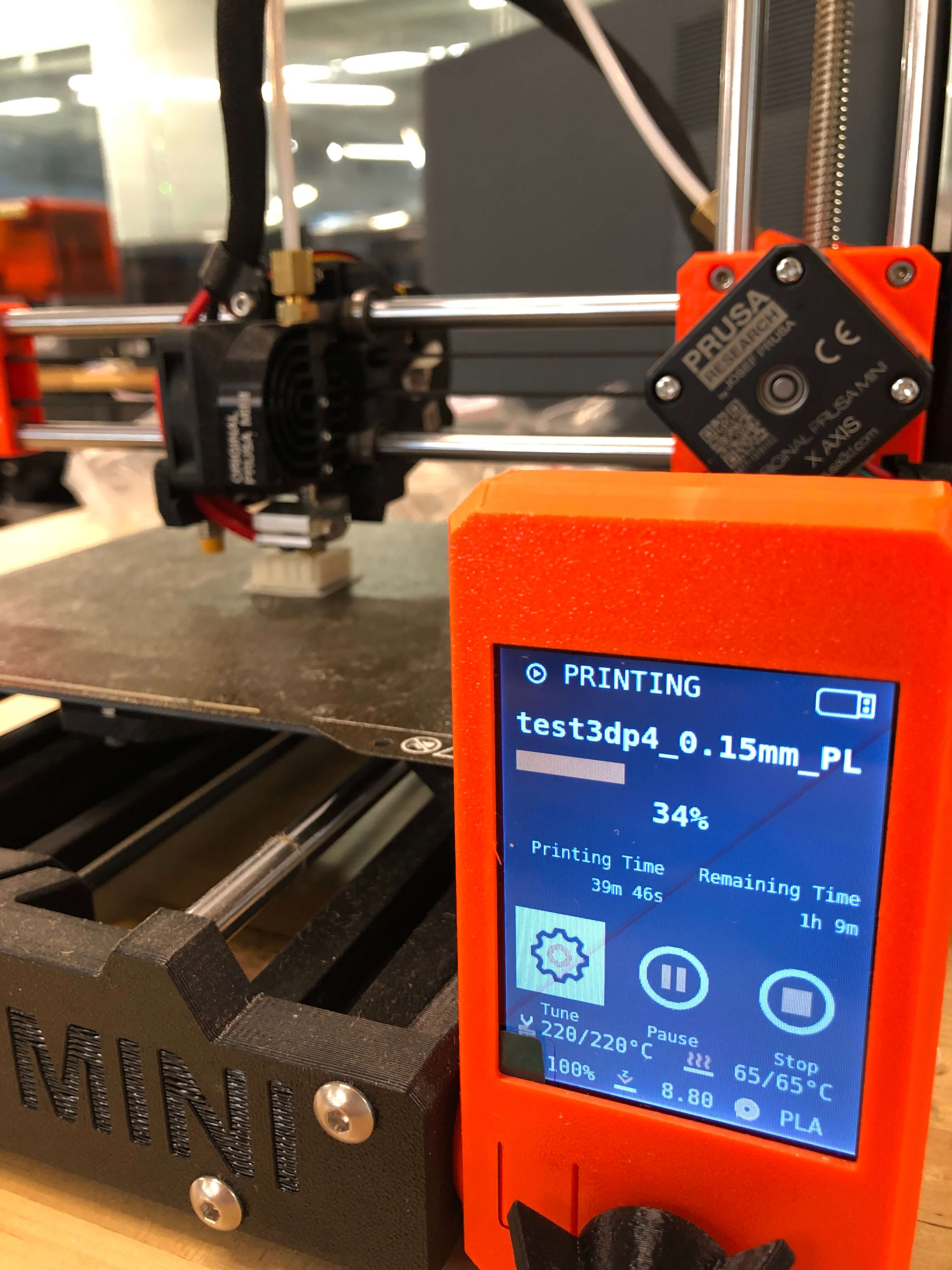6. 3D Scanning and Printing¶
This week: digging into 3D Printing using the Prusa Mini with PLA and 3D Scanning using Alethea’s iPhone with LiDAR and Polycam
3DP Attributes:¶
Printed on the Prusa 3D to assess quality and resolution of a sphere:
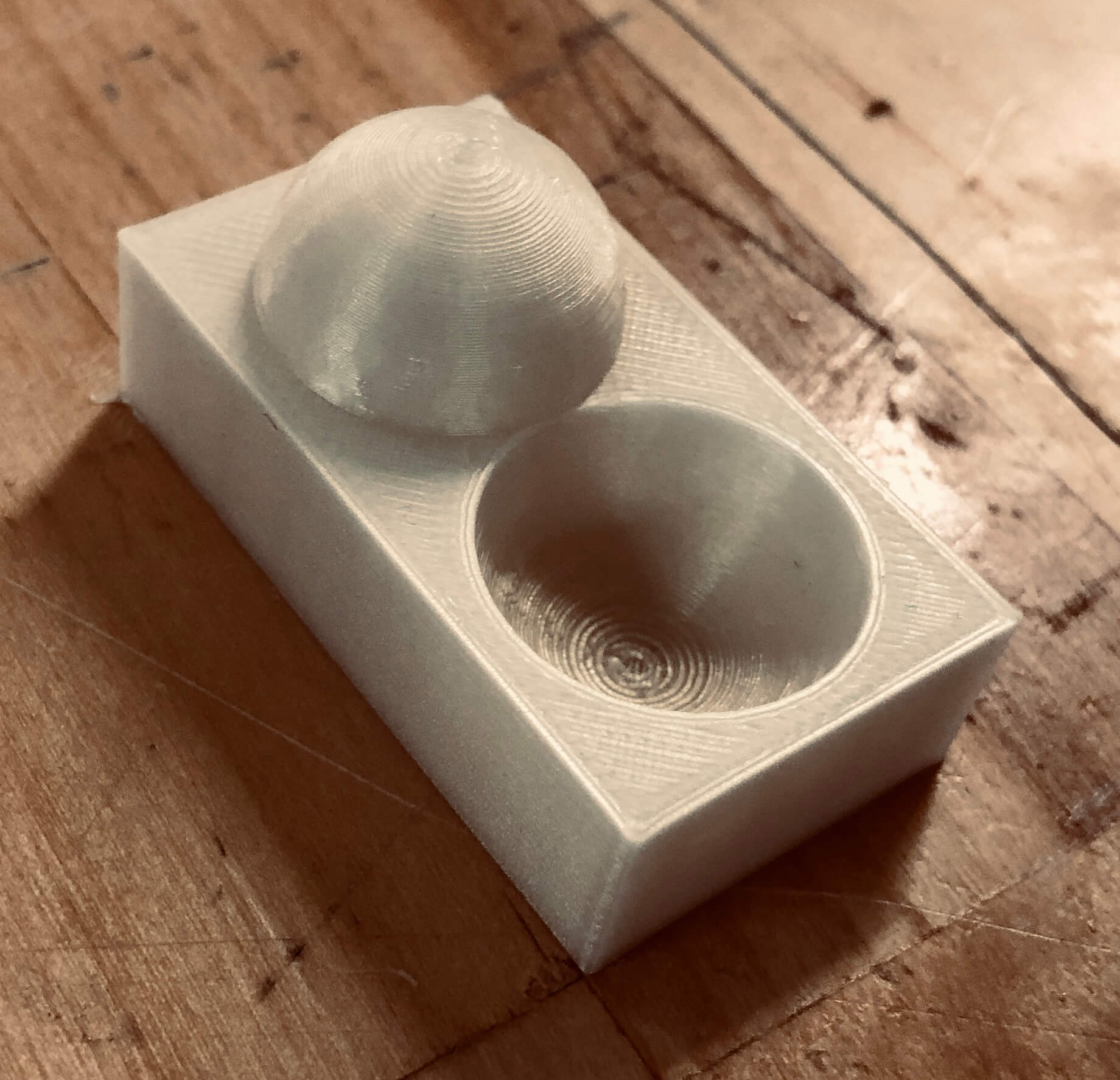
Created this calibration file in Tinkercad to assess overhangs and small tolerances in more detail (50mm x 50mm):

Here is the printed version, in general the machine performed very well, but was unable to print the very small self describing text details (you can see the text in the image above). I don’t think this was a fault of the machine, but just the limits of the nozzle itself:
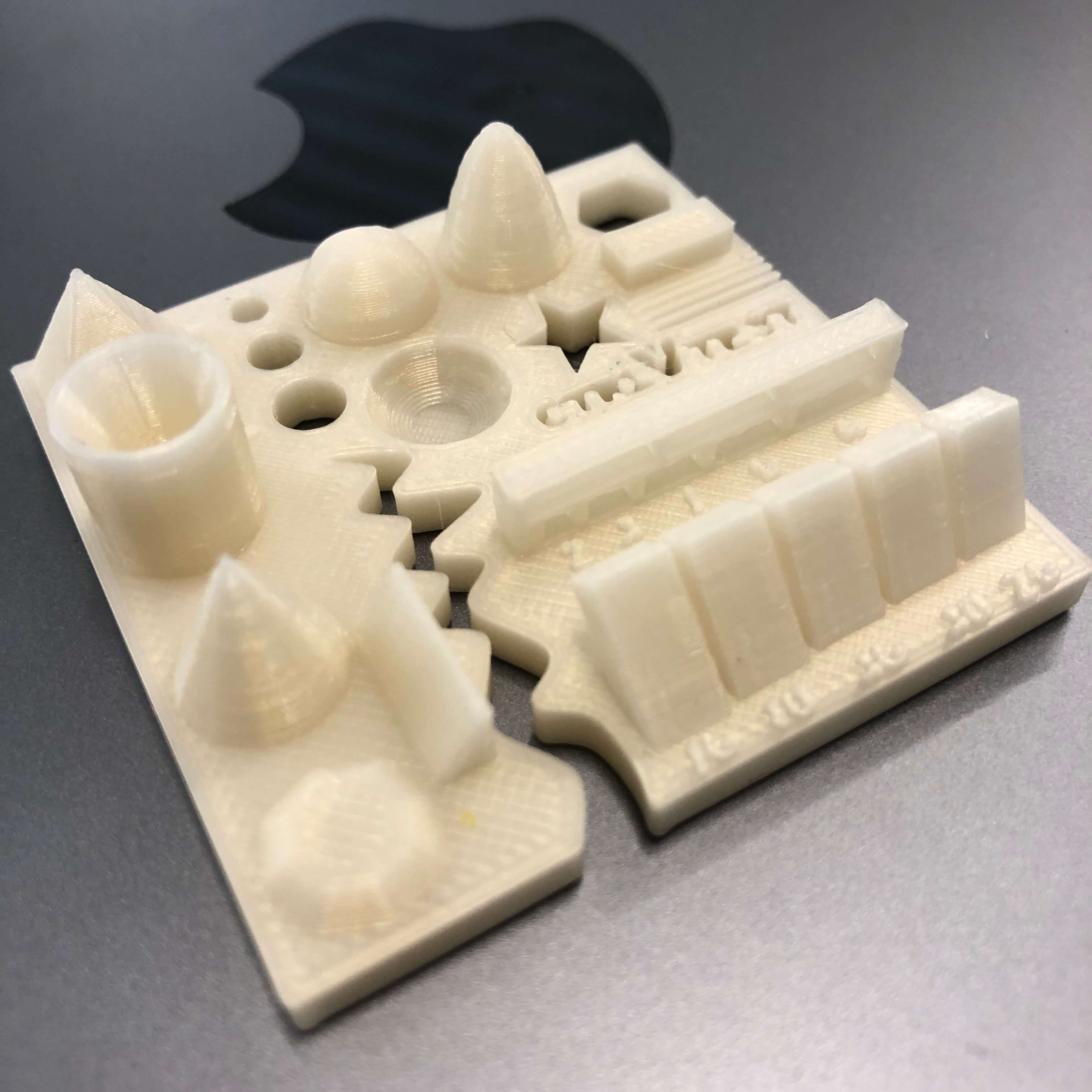
Designing & Redesigning¶
Worked on my Rhino Voronoi cube from Week 4:
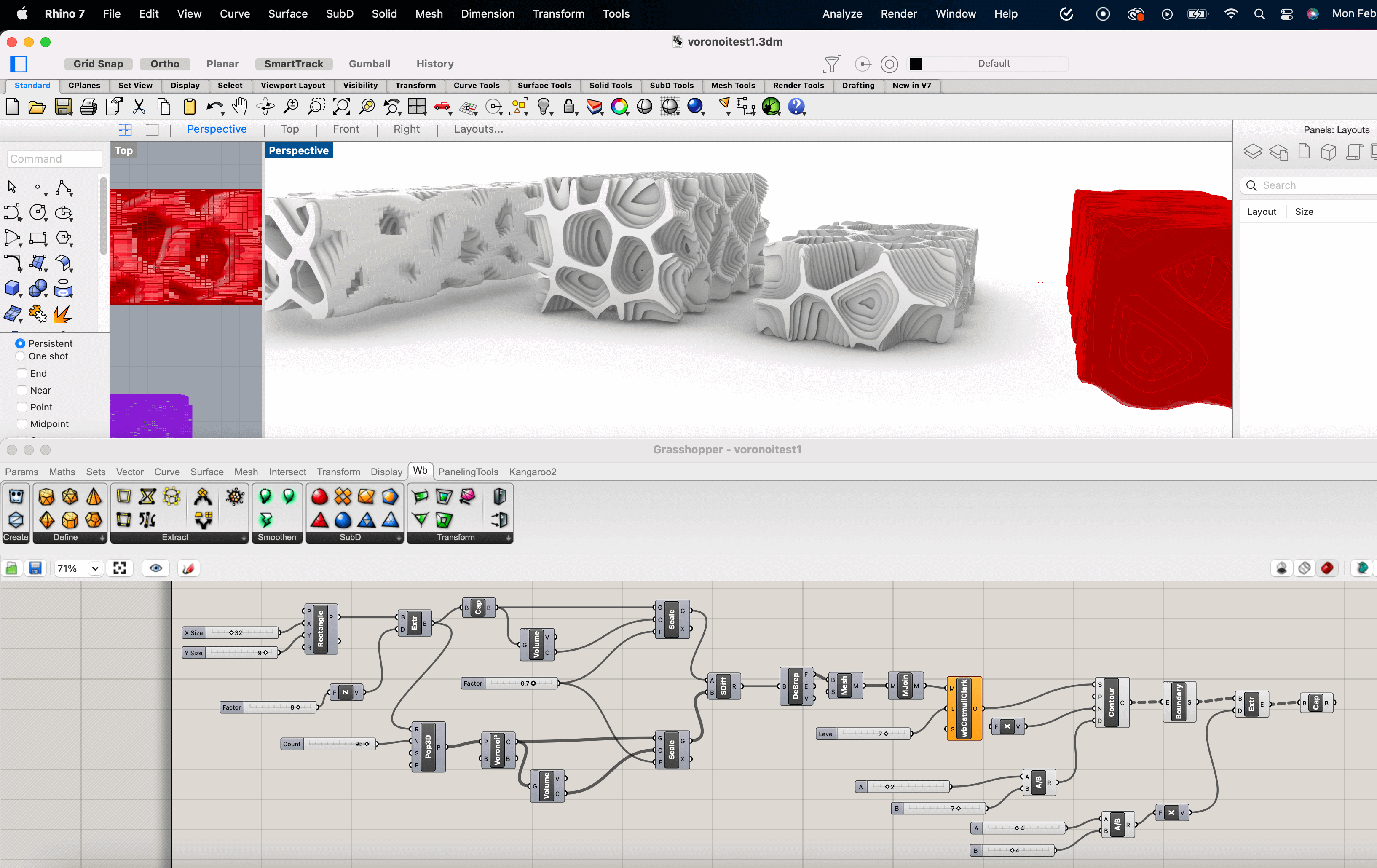
Here is a simplified Voronoi cube I designed for printing: scaled down to 1”, added a void inside, and then a sphere inside that. Also added a thin ‘slab’ to the base so it doesn’t fall apart because of the disparate elements. The idea is to print with 5% infill line supports and use the spaces in the design to pop out the supports and extract them through the gaps with an x-acto knife and tweezers, then free the ball inside. A very sophisticated cat toy. See cross-section:
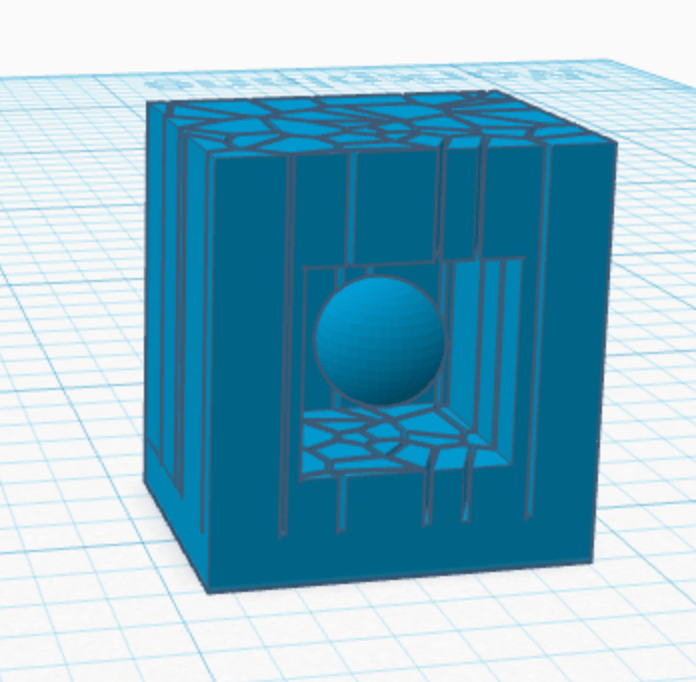
🚨 Caught a design issue: need to add a bounding solid frame around the void cube space in the center (shown in yellow), just like the little platform on the base so the disperate pieces don’t fall out when the internal supports are removed. Here’s the cross-section of the redesign:
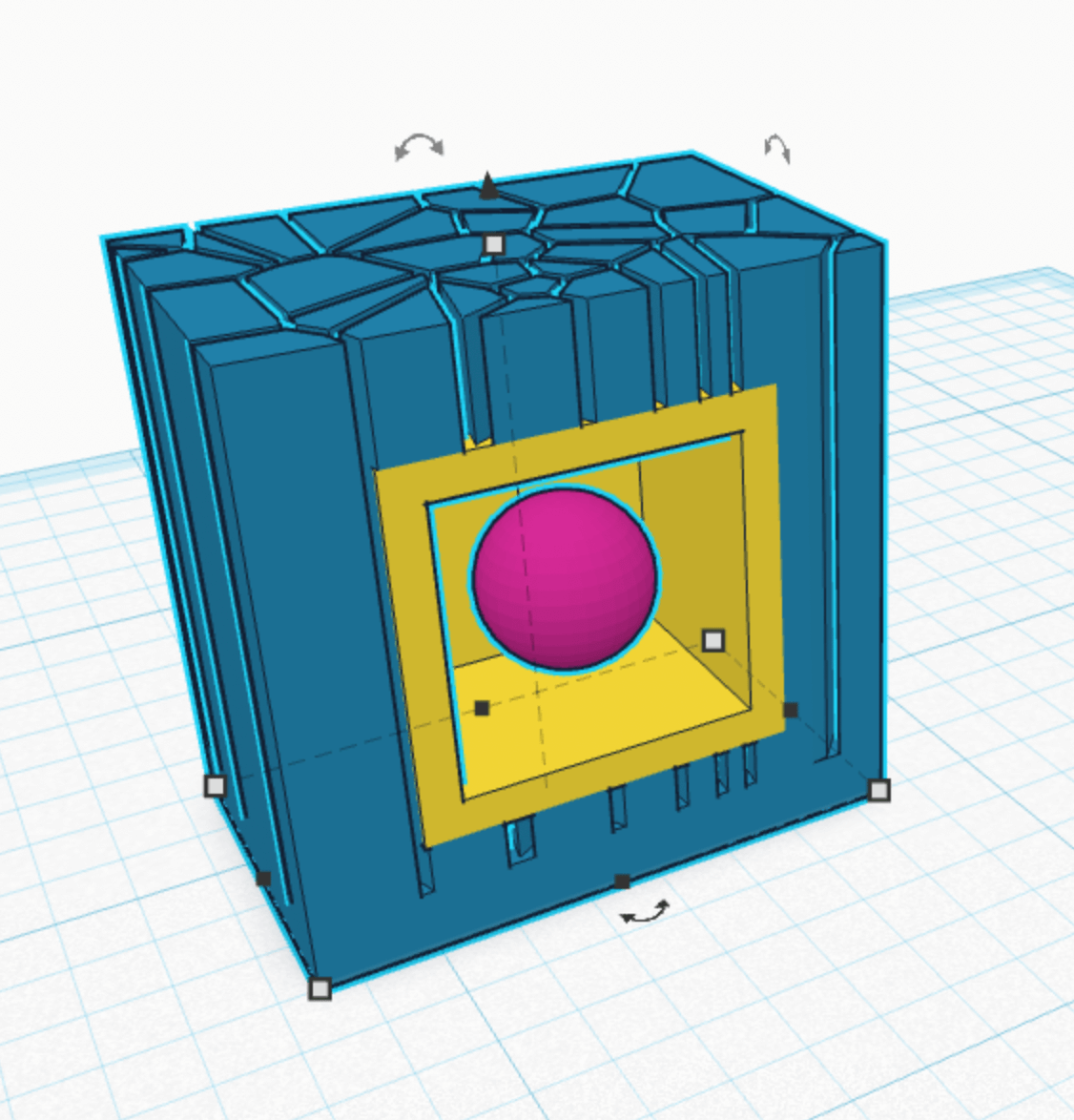
Slicing¶
Slicing the cube into gcode in PrusaSlicer using 5% infill on supports and PLA filament:

Printing¶
Printing a thing:
And finally… a printed thing:

Comments: How is it a design that can only be 3D printed? The sphere inside the cube is unique to this process; the support structure was set to LINES and 8% infill: the surrounding shell was thin enough to be flexible when the final print was completed, so you can squeeze the design and get the internal sphere to detach. This could not have been achieved through subtractive manufacturing, as the bits would have always removed elements that needed to be kept in-tact. The final design was to demonstrate a process specific to 3DP that could not be milled.
Scanning¶
Adventures in 3D Scanning using Polycam + LiDAR:
3D Scanning with Polycam by me on Vimeo.
(scanned files too large to share in repo–video made in leiu)
Takeaways: Phone App 3D scanners are still quite limited in their resolution of human faces; objects worked very well; but human subjects were far more entertaining.
Process: Subject sat still on low stool while another classmate used the camera with LiDAR following the Polycam prompts for coverage.
Results: Poor resolution but very entertaining process.
Useful Links¶
-
Simplify3D materials and properties guide.
-
Useful calibration assessment resource for honing the settings on the Prusa 3D Mini.
-
Print Quality guide from Simplify3D.
